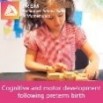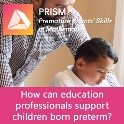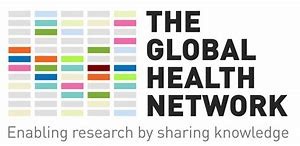
EGYPT
Rate: 7.3% Rank: 152
https://www.marchofdimes.org/mission/global-preterm.aspx#tabs-3
Egypt, officially the Arab Republic of Egypt, is a country spanning the northeast corner of Africa and southwest corner of Asia by a land bridge formed by the Sinai Peninsula. Egypt is a Mediterranean country bordered by the Gaza Strip and Israel to the northeast, the Gulf of Aqaba and the Red Sea to the east, Sudan to the south, and Libya to the west. Across the Gulf of Aqaba lies Jordan, across the Red Sea lies Saudi Arabia, and across the Mediterranean lie Greece, Turkey and Cyprus, although none share a land border with Egypt.
Health in Egypt
Egyptian life expectancy at birth was 73.20 years in 2011, or 71.30 years for males and 75.20 years for females. Egypt spends 3.7 percent of its gross domestic product on health including treatment costs 22 percent incurred by citizens and the rest by the state. In 2010, spending on healthcare accounted for 4.66% of the country’s GDP. In 2009, there were 16.04 physicians and 33.80 nurses per 10,000 inhabitants.
As a result of modernisation efforts over the years, Egypt’s healthcare system has made great strides forward. Access to healthcare in both urban and rural areas greatly improved and immunisation programs are now able to cover 98% of the population. Life expectancy increased from 44.8 years during the 1960s to 72.12 years in 2009. There was a noticeable decline of the infant mortality rate (during the 1970s to the 1980s the infant mortality rate was 101-132/1000 live births, in 2000 the rate was 50-60/1000, and in 2008 it was 28-30/1000).
The total number of Egyptians with health insurance reached 37 million in 2009, of which 11 million are minors, providing an insurance coverage of approximately 52 percent of Egypt’s population.
Source: https://en.wikipedia.org/wiki/Egypt
COMMUNITY

Please see the wonderful global collaborators pictured below!
GLANCE – 1st Founding Committee Meeting
Posted on 02 JULY 2019
In January, EFCNI announced the founding of GLANCE, the Global Alliance for Newborn Care on the annual Parent Organisations Meeting. After thorough planning and preparations, the first GLANCE Founding Committee Meeting took place in Munich. 14 international parent representatives from Europe, Turkey, Africa, Australia, the United States, Canada and Mexico as well as four EFCNI members, had been working hard in a two days meeting to make progress in structural and organisational regards, settling for areas of activities and deciding on first global awareness campaigns. Moreover, the group could also elaborate a global Call to Action with eight demands to advance the care for babies born too soon, too small or too sick and the support given to their families.
“My work with EFCNI has not only shown me the disparities in neonatal healthcare we are facing in Europe. In fact, I learnt that there are worldwide issues we, as a European based organisation, are not able to tackle. We simply cannot speak for babies and families in Asia, Africa or South America, as we do not have any first-hand information about the most pressing needs and are lacking contacts and spokespersons on site. Therefore, we must establish a strong global network to efficiently join forces and to become a powerful voice for these children and their parents.”, stated EFCNI-Chairwoman Silke Mader.
GLANCE strives to expand its network of collaborating partners in the future, to represent sick newborns and their parents in each region/continent. We would like to thank all participants of this meeting for their valuable and inspiring input, for the insightful talks and constructive debates. With a lot of work ahead we are certain that together, we have the power to make an impact, helping babies born too soon, too small or too sick and their families – worldwide!
*** Website www.glance-network.org to be launched in November 2019
About GLANCE:
GLANCE, the Global Alliance for Newborn Care, is a global network to represent the interests of babies born too soon, too small or too sick and their families. Initiated and coordinated under the umbrella of EFCNI, GLANCE aims at including parents, from all parts of the world to exchange knowledge and experience. GLANCE aspires to decrease the burden of afflicted families and their preterm and sick newborns to help them thrive beyond survival.

The GLANCE Founding Committee presenting the Call to Action: 1st row (f.l.t.r.): Eleni Vavouraki (Ilitominon, Greece), Nicole Thiele (EFCNI, Germany), Silke Mader (EFCNI, Germany), Ilein Bolaños (Con amor vencerás, Mexico), Ilknur Okay, (El Bebek gül Bebek, Turkey) 2nd row (f.l.t.r.): Silvia Kolossa (EFCNI, Germany), Sarah Fuegenschuh (EFCNI, Germany), Oleksandra Balyasna (Early Birds, Ukraine), Mandy Daly (INHA, Ireland), Kylie Pussell (Miracle Babies Foundation, Australia), Asta Radzevičienė (Neisnesiotukas, Lithuania), Gigi Khonyongwa-Fernandez (Preemie Parent Alliance, USA), Paula Guerra (XXS – Associação Portuguesa de Apoio ao Bebé Prematuro, Portugal), Livia Nagy (Melletted a helyem Egyesület alelnöke, Hungary), Alisson McNulty (TinyLife, Northern Ireland), Selina Bentoom (AFPNC, Ghana), Fabiana Bacchini (CPBF, Canada), Aurelia Abenstein (EFCNI, Germany), not in picture: Nina Nikolova (Our premature babies, Bulgaria)
Source: https://www.efcni.org/news/glance-1st-founding-committee-meeting/

Like each of us, every Warrior has unique abilities and needs. As research related to the educational needs of our preterm birth Neonatal Womb Warriors progresses, our ability to enhance Warrior well being will empower us to identify, create, expand and make available priceless educational tools for the preemie survivor toolbox. Thank you teachers! We appreciate the important contributions you will make to our Warrior community and to our global Community at large.
Preterm Birth Information for Education Professionals
Welcome to the Preterm Birth Information for Education Professionals home page. These five learning resources have been developed to improve your knowledge and confidence in supporting prematurely born children in the classroom.
*** The site allows you to navigate through the resources by selecting an image for each subject!

- To define preterm birth
- To understand that the more preterm a baby is born, the greater the risk of developmental problems later in life

- To understand that children born preterm are at risk of special educational needs and poor academic attainment
- To identify which school subjects children born preterm are most likely to struggle with.

- To understand that children born preterm may have difficulties with IQ, processing speed, working memory, and hand-eye coordination
- To understand how these difficulties may impact on learning

- To understand that children born preterm may be withdrawn, anxious, and inattentive, and have difficulties developing relationships with their peers
- To understand that children born preterm don’t tend to be disruptive so their needs may be overlooked in the classroom

- To understand what kind of strategies might be helpful for supporting children born preterm
- To understand that preterm birth is a risk factor and an individual assessment is always necessary to provide appropriate support
Source: https://www.nottingham.ac.uk/helm/dev/prism/

Does being born preterm matter at secondary school?
By Maria Burke – 28 March 2019
Research into preterm children’s long-term development and learning could inform strategies for teachers to support their progress.
Children born before 34 weeks gestation are more likely to have poorer reading and math skills than those born at full term, although not every child born prematurely will experience learning or developmental challenges. As medical science advances and more babies survive premature birth, an average primary class will include two preterm children. What does this mean for secondary school teachers, and science teachers, in particular?
David Odd, a neonatal consultant at Southmead Hospital, Bristol, has studied the impact of premature birth on school performance. He recently reported that preterm children have a higher risk of needing special educational support and achieving low GCSE scores than those born at full term, although the impact of prematurity appears to diminish the longer children are at school. He also found that infants born before 32 weeks gestation have the highest risk of poor school outcomes.
What’s more, school entry dates are based on children’s actual birthdates rather than their due dates, which appears to have a measurable impact on preterm students’ exam results in adolescence. David reports that, consequently, this may ‘limit adulthood opportunities’. There is evidence that placing a preterm child in the ‘correct’ school year reduces the possibility of special educational needs (SEN).
‘[The education system] is only just starting to consider the best ways to support these ex-preterm infants as they grow,’ David comments. ‘Preterm birth is common and most teachers will have ex-preterm infants in their classrooms. Training may be useful, but recognition of this group of vulnerable infants is certainly important. Recognising their “true age” and that they have higher risk of additional needs would perhaps be the first step.’ David strongly supports flexibility on school admission age for this group, as his results suggest that this may lead to improved late educational outcomes, particularly for those born extremely preterm.
Struggles with math and science
Preterm children experience particular difficulties with working memory and hand-eye coordination (visuospatial awareness), according to research by Samantha Johnson, a developmental psychologist at the University of Leicester, and Camilla Gilmore, who studies mathematical cognition at the University of Loughborough. This could be why some preterm children find maths challenging at primary level, as reported by the Premature Infants’ Skills in Mathematics (PRISM) study.
Samantha and her colleagues are currently researching mathematics attainment in secondary school (PRISM-2). Early evidence shows that preterm students are still at higher risk of lower attainment than their term-born peers. In particular, they found that students born very preterm tend to struggle more with many aspects of maths, including basic number skills, arithmetic and algebra. ‘Given the close relationship between science and mathematics, it’s likely that science education might also be an area of difficulty,’ Camilla adds.
- A preterm birth occurs before 37 completed weeks of pregnancy.
- Each year around 60,000 babies are born preterm in the UK (7% of all births).
- Of these: 5% are born before 28 weeks (extremely preterm); 11% at 28–32 weeks (very preterm); and 85% at 32–37 weeks (moderate to late preterm).
Source: tommys.org
The team found that the attainment of very preterm children showed little change from primary to secondary school compared with their peers. ‘Although very preterm children don’t seem to catch up with their peers by secondary school, they also don’t seem to fall further behind,’ says Camilla.
Samantha and Camilla believe that students born very preterm who struggle with maths may need different types of support compared with other students who have difficulties. ‘They may benefit from particular strategies that reduce the working memory demands of classroom activities, or extra support with visuospatial skills,’ Camilla says. ‘For example, science subjects may have particularly high visuospatial demands, such as reading information from graphs, drawing diagrams or carrying out practicals, and some preterm children may struggle with this.’
How useful is labelling?
Disclosing preterm birth status would help to identify those who could benefit from more support, says Jenny Retzler, a developmental psychologist at the University of Huddersfield. Jenny explains there is evidence that preterm children with attention problems don’t always receive the SEN support they require. ‘This is thought to partly be down to the fact that these symptoms tend to be tricky to observe,’ Jenny comments. ‘For example, they have difficulty paying attention, or with schoolwork, rather than disruptive behaviour. Jenny points to research suggesting that the majority of teachers and educational psychologists think disclosing preterm birth status could be helpful. ‘Few felt it would cause any negative effects due to labelling,’ she notes.
Jane Essex, a chemistry education lecturer at the University of Strathclyde, disagrees. ‘[Identification] has no meaningful predictive capacity, and provides no guidance on how education should be conducted,’ she says. Jane thinks teachers should only use functional labels to guide practice. Prematurity might be only one reason for slower processing ability. She believes that making adjustments to help a child learn shouldn’t depend on cause but rather their functional significance in learning. ‘So slow processing speeds mean that lists or instructions need to be short, repeated and supported with icons, signs and writing to make them more memorable.’
Rob Butler, a special school science teacher for 20 years, also has reservations. ‘A diagnosis is really only useful to the school if it provides a set of strategies to help the child. There is also a danger that it sets parents up to expect provision that they might not receive, especially within a stretched mainstream school.’
However, many teachers report that they don’t know enough about the difficulties preterm children may face and lack confidence in supporting them, says Samantha. Her team is working with teachers, educational psychologists, parents and young adults born preterm to design an online training resource for teachers. This resource provides information about preterm birth and how it can affect long-term development and learning as well as strategies for teachers to support learning. A recent evaluation of this resource found that teachers’ knowledge and confidence increased after use, Camilla reports. The great news is that this training material will be freely available for teachers ‘very soon’.
Source: https://eic.rsc.org/analysis/how-preterm-birth-can-affect-learning/3010277.article

The Global Health Network Annual Report 2019 is Now Available to Read Online
Please check out this informative, colorful and progressive publication that describes The GHN as follows:
“The Global Health Network supports health professionals to lead research in the world’s most challenging settings and enables organizations to share best practice and know-how around the globe.
The Global Health Network enables health workers in the world’s most vulnerable regions to undertake health research to drive sustainable health improvements. This is achieved by delivering research capacity development and career support to research teams and frontline healthcare workers, no matter where they are or how resource-constrained their environment”.

Source:https://hub.tghn.org/about/annual-report-2019/
HEALTH CARE PARTNERS
![]()
The ideal strategy of weaning from nasal continuous positive airway pressure in preterm infants: are we there yet?
Islam Nour – Department of Pediatrics/Neonatology, Mansoura University Children’s Hospital, Mansoura, Egypt – Department of Pediatrics/Neonatology, Mansoura University Children’s Hospital, Mansoura, Egypt
First published: 25 December 2018
The ideal strategy of weaning off nCPAP is not established. Premature discontinuation may lead to atelectasis, apnoea and bradycardia, respiratory distress, prolonged oxygen therapy and ultimately lung injury 1. On the other hand, undue prolonged therapy increases the risk of nasal trauma, gastric distension, pneumothorax and agitation 2.
Previous studies showed conflicting results. Amatya et al. 3 found that more infants in the gradual wean group were successfully weaned off nCPAP as compared with the sudden wean group, with no difference in respiratory morbidity, weight gain, days on nCPAP and length of hospital stay. In contrast, Eze et al. 4 demonstrated that weaning CPAP in very preterm infants via sprinting (gradual increasing spontaneous breathing off nCPAP) versus weaning pressure down were comparable, regarding successful weaning and the occurrence of common neonatal morbidities. Jensen et al. have shown no difference in weight gain velocity from randomisation to 40 weeks PMA and in secondary outcomes between preterm infants born before 32 weeks of gestation, randomised to sudden weaning versus pressure weaning from nCPAP. The discrepancy in the findings of the Jensen et al.’ study and previous studies may be related to differences in gestational age and the severity of respiratory dysfunction, as infants enrolled in Jensen et al. and Amatya et al.’ studies had higher gestational age [median GA 30 (29–31), mean 28.7 ± 1.8 weeks, respectively], compared to Eze et al. [median 26.5 (23.6–30.6) weeks] and had less severe respiratory dysfunction as the need for surfactant was 36, 20%, respectively versus 63–73% in Eze et al. study.
More infants <28 weeks of gestation at birth were successfully weaned from nCPAP during the first attempt in the pressure wean group compared with the sudden wean group. Similarly, Soe et al. 5 found that pressure weaning was more effective than cycling off nCPAP in infants born 24–27 weeks of gestation but not in infants over 28 weeks of gestation at birth. This may indicate that pressure weaning is more appropriate in these infants or that they should have different readiness to wean from nCPAP criteria such as lower FiO2 requirements, lower nCPAP pressure and older postnatal age.
This is the largest RCT to date to compare sudden wean and pressure wean of very preterm infants from CPAP. However, the results of this study should be interpreted with caution, due to some limitations such as:
- This study has adopted stability criteria for readiness to wean from nCPAP with a relatively high nCPAP pressure <8 cm H2O, in contrast to 4–6 cm H2O used in previous studies 3, 6. We assume that this high pressure may not be ideal for infants born before 28 weeks of gestation;
- The authors used weight gain velocity from randomisation to term‐equivalent corrected gestational age as a primary outcome. However, weigh gain velocity in preterm infants is not only related to successful weaning off nCPAP but related to many other factors including initial weight percentile, sepsis, cardiovascular disease, feeding intolerance, necrotizing enterocolitis and respiratory requirements 7.
Where do we go from here? In preterm infants <32 weeks of gestation, sudden discontinuation and gradual pressure weaning strategies seem to be equally effective approaches for weaning from nCPAP, and pressure wean may be preferred in infants who <28 weeks of gestation. However, future studies are warranted for refinement of readiness to wean from nCPAP criteria and to study the influence of different nCPAP weaning strategies on long‐term pulmonary and neurodevelopmental outcomes.
Source:https://www.onlinelibrary.wiley.com/doi/10.1111/apa.14673
URL to the full review on the EBNEO web site-
Source:https://ebneo.org/2018/12/2018-12-weaning-from-nasal-cpap/

Homeward Bound: The Discharge of a Technology-Dependent Infant from the NICU
Abstract: Peer Reviewed
Valerie Boebel Toly, PhD, RN, CPNP,, and Carol M. Musil, PhD, RN, FAA
Purpose: An estimated 3.1% of infants discharged from the NICU require ongoing life-saving medical technological equipment such as supplemental oxygen and feeding tubes. The study purpose was to examine mothers’ psychological well-being (e.g., presence of depressive symptoms, posttraumatic stress disorder symptoms) during the three months following their technology dependent infant’s discharge from the NICU. Methods: A longitudinal, descriptive study design was employed to examine maternal psychological well-being a three time points; 2-3 weeks prior to discharge, one and three months post discharge. Convenience sampling was used to recruit 19 mothers of infants dependent on medical technology being discharged from a large Midwest Level 4 NICU in the United States. Results: The total scores for maternal depressive symptoms and posttraumatic stress disorder (PTSD) symptoms indicated over one third of the mothers were experiencing psychological distress at discharge. Nearly one half were at increased risk for clinical depression and PTSD and warranted referral for mental health assistance one month post-discharge. Conclusions: A large percentage of study participants reported considerable psychological distress. It is vitally important to perform mental health assessments prior to the discharge of technology-dependent infants prior to discharge and at regular intervals following discharge and refer for mental health assistance as needed. Such finding indicate the critical need to offer enhanced transition services and education as well as assessment of discharge readiness by the interdisciplinary NICU team.
FULL ARTICLE: ![]() Source:http://www.neonatologytoday.net/newsletters/nt-jul19.pdf
Source:http://www.neonatologytoday.net/newsletters/nt-jul19.pdf

INNOVATIONS
Reviewed by Kate Anderton, B.Sc. (Editor) Mar 27 2019
Artificial placenta based life support technology breaks its 4 minute mile
A major advancement in pioneering technology based around the use of an artificial womb to save extremely premature babies is being hailed as a medical and biotechnological breakthrough.
Recently published in the medical publication, The American Journal of Obstetrics & Gynecology, the study presents world first data demonstrating the ability of an artificial placenta based life support platform to maintain extremely preterm lamb fetuses (600700g); equivalent to a human fetus at 24 weeks of gestation.
Head of WIRF’s Perinatal Research Laboratories and Local Chief Investigator, Associate Professor Matt Kemp, said that whilst previous research had demonstrated the feasibility of extended survival with artificial placenta technology in late preterm fetuses, there was no published evidence that demonstrated the use of the platform to support extremely preterm fetuses the eventual clinical target of this technology.
“For several decades there has been little improvement in outcomes of extremely preterm infants born at the border of viability (2124 weeks gestation),” Assoc Prof Kemp said.
“In the AJOG study, we have proven the use of this technology to support, for the first time, extremely preterm lambs equivalent to 24 weeks of human gestation in a stable, growth normal state for five days.
“This result underscores the potential clinical application of this technology for extremely preterm infants born at the border of viability. In the world of artificial placenta technology, we have effectively broken the 4 minute mile.”
Assoc Professor Matt Kemp said the latest findings represent a significant milestone in the technology’s future implementation into clinical use.
“If we are to improve outcomes for babies born at the border of viability we must recognize that they are not ‘small babies’; rather, they are a unique patient demographic that, due to their extremely underdeveloped lungs and limited cardiovascular capacity, require an entirely different treatment approach from older preterm infants.
“The technology was designed to revolutionize the treatment of severely premature newborns. The goal is to offer a bridge between a natural womb and the outside world to give babies born at the earliest gestational ages more time for their fragile lungs to mature.
“With additional refinement, what today might be considered as futuristic technology might soon not be so futuristic and might be standard of care.”
The EVE Therapy project brings together leading academic researchers from the Women and Infants Research Foundation, The University of Western Australia and Tohoku University Hospital, Japan, and is undertaken in close partnership with one of Japan’s foremost biomedical technology companies, Nipro Corporation.
Source:https://www.tohoku.ac.jp/en/press/artificial_womb_March2019.html

Johns Hopkins University and University of Manitoba Faculty Awarded Grant to Study Prelacteals’ Impact on Neonatal Microbiome July 8, 2019
In many countries, ritual foods, such as honey and animal milk, are commonly given to newborns before they are first breastfed or early in life. These foods, called prelacteals, may undermine the benefits newborns would otherwise receive from exclusive breastfeeding. Dr. Alain Labrique of the Johns Hopkins School of Public Health and Dr. Meghan Azad of the University of Manitoba received a grant awarded through the Bill & Melinda Gates Foundation “Call-to-Action” to participants of the 2018 Grand Challenges meeting in Berlin, Germany. Building on Labrique and Azad’s prior work, in Bangladesh and Canada, respectively, the study will assess whether prelacteals affect the populations of bacteria in the newborn gut (the microbiome), a first step to understanding how this may affect development and survival.
Immediate and exclusive breastfeeding helps maintain healthy growth in infants and protects them against infections. The gut microbiome is intrinsically involved in both of these processes. However, in Bangladesh and many other low-resource countries, it is a common cultural practice to give newborns ritual foods, like honey or animal milk, before breastfeeding begins. Labrique and Azad hypothesize that prelacteals interfere in the development of an optimal gut microbe, which, in turn, impedes newborn development.
To test this, they will use a long-standing population research site in rural Bangladesh (JiVitA.org) and compare the types and amounts of bacteria in the gut using stool samples from 300 prelacteal-fed or exclusively breastfed infants at 7 days, 28 days and 3 months of life. They will also analyze prelacteal composition to search for pathogens, heavy metal contaminants, as well as examine bacterial populations in the breastmilk and on the skin of the mothers. The study will enable them to quantify the potentially negative impact of this widespread cultural practice, common to over a billion people across the Gangetic floodplain in Bangladesh, India and Pakistan.
Grand Challenges is a family of initiatives of the Gates Foundation fostering innovation to solve key global health and development problems. Meeting participants in Berlin were invited to identify a major global health challenge and submit a two-page proposal describing how they would solve it. “Prelacteals: A Source of Infection and Microbiome Disruption?” will help foster a new collaboration that links cutting-edge population research and state-of-the-art laboratory science, the results of which could lead to important future policy implications.
Labrique, an associate professor in the Department of International Health at the Bloomberg School, is an infectious disease epidemiologist and a globally recognized leader in developing and testing innovations to improve maternal and infant health outcomes. Azad, a Canada Research Chair in Developmental Origins of Chronic Disease and assistant professor in the Department of Pediatrics & Child Health at the University of Manitoba, is an expert in the developmental origins of chronic disease, including asthma, allergies, obesity and diabetes. She uses a trans-disciplinary approach to bridge the traditional pillars of research. Azad also serves as a research scientist at the Children’s Hospital Research Institute of Manitoba (CHRIM).

PREEMIE FAMILY PARTNERS

Preterm babies are less likely to form romantic relationships in adulthood
Posted on 17 July 2019
Adults who were born preterm (under 37 weeks gestation) are less likely to have a romantic relationship, a sexual partner and experience parenthood than those born full term. The meta-analysis by researchers at the University of Warwick with data from up to 4.4 million adult participants showed that those born preterm are 28% less likely to ever be in a romantic relationship.
- A study of up to 4.4m adult participants has shown that those who were born preterm (under 37 weeks gestation) are less likely to form romantic relationships, have sexual relations or experience parenthood than those who were born full term
- Research from the University of Warwick suggests it’s partly due to pre-term birth being associated with being more often withdrawn and shy, socially excluded and less likely to take risks in adolescence
- More needs to be done in schools and by parents to encourage social interactions at younger ages, so when they transition to adulthood they are more likely to meet someone and increase their wellbeing
A meta-analysis conducted by researchers from the Department of Psychology at the University of Warwick, ‘Association of Preterm Birth/Low Birth Weight with Romantic Partnership, Sexual Intercourse and Parenthood in Adulthood: A Systematic Review and Meta-Analysis’ , was published in JAMA Open on 12 July. They have found that adults who were born pre-term are less likely to form romantic relationships than full-term peers.
In the analysis 4.4 million adult participants those born preterm were 28% less likely to form romantic relationships and 22% less likely to become parents, when compared to those born full term.
Those studies that looked at sexual relations of pre-term children found that they were 2.3 times less likely to ever have a sexual partner when compared to full terms.
Those adults who were born very (<32 weeks gestation) or extremely preterm <28 weeks gestation) had even lower chances of experiencing sexual relationships, finding a romantic partner or having children at the same age as those born full term, with the extremely pre-term born adults being 3.2 times less likely to ever having sexual relations.
Close and intimate relationships have been shown to increase happiness and well-being both physically and mentally. However, studies also show that forming those relationships is harder for pre-term born adults, as they are usually timid, socially withdrawn and low in risk-taking and fun seeking.
Despite having fewer close relationships, this meta-analysis also revealed that when preterm born adults had friends or a partner, the quality of these relationships was at least as good in preterms compared to full term born adults.
First author of the paper, Dr Marina Goulart de Mendonça from the Department of Psychology at the University of Warwick comments:
“The finding that adults who were born pre-term are less likely to have a partner, to have sex and become parents does not appear to be explained by a higher rate of disability. Rather preterm born children have been previously found to have poorer social interactions in childhood that make it harder for them to master social transitions such as finding a partner, which in turn is proven to boost your wellbeing.”
The senior author, Professor Dieter Wolke, from the Department of Psychology at the University of Warwick adds: “Those caring for preterm children including parent’s health professionals and teachers should be more aware of the important role of social development and social integration for pre-term children. As preterm children tend to be more timid and shy, supporting them making friends and be integrated in their peer group will help them to find romantic partners, have sexual relationships and to become parents. All of which enhances wellbeing.”
Paper available to view at: JAMA Network Open Full list of authors: Marina Mendonca, Ayten Bilgin, Dieter Wolke
Source: https://www.efcni.org/news/jama-open/
Music helps to build the brains of very premature babies
 Université de Genève (UNIGE) –Researchers from the University of Geneva (UNIGE) and the University Hospitals of Geneva (HUG) demonstrate how music specially composed for premature infants strengthens the
Université de Genève (UNIGE) –Researchers from the University of Geneva (UNIGE) and the University Hospitals of Geneva (HUG) demonstrate how music specially composed for premature infants strengthens the
development of their brain networks and could limit the neurodevelopmental delays that often affect these children.
WARRIORS:
Sharing stories offers immeasurable potential for healing individually, within our families and for our healthcare provider, research, technology, and other Neonatal Womb community members. Choose conversation, writing, dance, art, music, exercise, meditation, therapy or follow your unique guidance to explore your preterm birth experience. Celebrate you, your journey and those that share your journey…..

Integrating infant mental health into the neonatal intensive care unit
April 3, 2019 – Children’s Hospital Los Angeles
Psychotherapists attend to mental health needs of NICU families, specifically focusing on the developing relationship between babies and parents.
Bringing a baby into the world involves many firsts — mothers and fathers are discovering their new roles, babies are learning what it means to live outside the womb, and the family is forging a relationship and bonding. What happens when this time of uncertainty is complicated by medical issues?
Many infants born premature or with other complications often forego their first weeks or months at home for a stay in the neonatal intensive care unit. The NICU is designed to deliver critical medical care to babies in need but can be traumatic for infants and their families, alike. In the Early Childhood Mental Health Program at Children’s Hospital Los Angeles, clinical psychologists Marian Williams, PhD, Patricia Lakatos, PhD, and a team of infant-family mental health specialists work towards greater mental health awareness in the NICU.
Infants may not be the first age group called to mind in discussions of mental health. Yet, for babies in critical medical condition, Dr. Lakatos says an “infant mental health-informed perspective” could reduce stress and improve bonding with parents. This means not only focusing on the physical needs of the child but also the emotional and mental needs, not an easy task for newborn infants who cannot make their voices heard.
In an article published in Journal of Clinical Psychology in Medical Settings, Dr. Lakatos, Dr. Williams, and co-authors Tamara Matic, MD, and Melissa Carson, MD, advocate for a third component of the NICU family — the relationship between baby and parents. “A lot of mental health work in NICUs currently focus on either the mental health of parents or on the baby’s development,” says Dr. Williams, who is also the Director of the Stein Tikun Olam Infant-Family Mental Health Initiative at CHLA. “We also want to focus on the relationship between babies and their parents.”
Many parents of children in intensive care units experience symptoms of post-traumatic stress, which can threaten bonding with a newborn baby. In order to support the developing relationship between parents and their new baby, the CHLA infant mental health team turned to a model of intervention that has demonstrated success in families who have undergone trauma. Child-Parent Psychotherapy — or CPP — addresses the parent-child relationship directly, nurturing and advocating for it in its own right.
With funding from the Stein Tikun Olam Infant-Family Health Initiative, Drs. Williams and Lakatos, and the team were able to adapt CPP to the NICU setting at Children’s Hospital Los Angeles. Their publication describes how the established, evidence-based CPP model can be used to nurture developing infant-parent relationships in the NICU. While it has been implemented in other settings, CPP is not commonly integrated into NICU patient care.
CPP is a flexible model that has multiple levels of intervention, depending upon individual family needs. Sessions with trained CPP providers can vary in number or duration, with the aim of restoring a developmental trajectory for parent and child. CPP providers advocate for mental health needs of parents and babies, working alongside their medical and social work colleagues. “When babies are in the hospital, we need to think about them, their parents, and their relationships,” says Dr. Lakatos.
Appropriately, NICU medical staff focus on the acute physical needs of the child. Dr. Williams sees clinical psychologists in a necessary, complementary role. “These babies are eventually going home,” she says. “They are missing out on their bonding time, but there is great potential for resilience. Being mindful of the stressors these families are facing helps them feel understood and can set them on a positive trajectory.”
Materials provided by Children’s Hospital Los Angeles.
Source:https://www.sciencedaily.com/releases/2019/04/190403135019.htm

KAT’S Corner
On September 1, 2019 we are launching a 36 day Instagram at handle-katkcampos honoring the 36 countries we have highlighted in the Neonatal Womb Warriors blog for the past 3 and ½ years. We identified 36 global fashion “trends” for Fall 2019 and paired them with a country we have “visited” to date. The pairing was blind (two sets of folded up paper with fashion and country names chosen blindly from two separate bowls) and we are including an item made by or representing each country somewhere in the photo shoot. Although this Instagram series is meant to be a fun tribute illustrating our gratitude and love for the community at large, the healthcare challenges related to preterm birth are extremely serious. Our goal is to continue to shine a light on our amazing global preterm birth community so that we can work together to identify our needs and resources, create solutions, support and enhance the wellbeing of ALL of our community partners.
Surfing In Egypt
PLEASE ENJOY THIS EXTREMELY COOL VIDEO!
Coral Surfing Egypt-Published on Aug 23, 2016
















